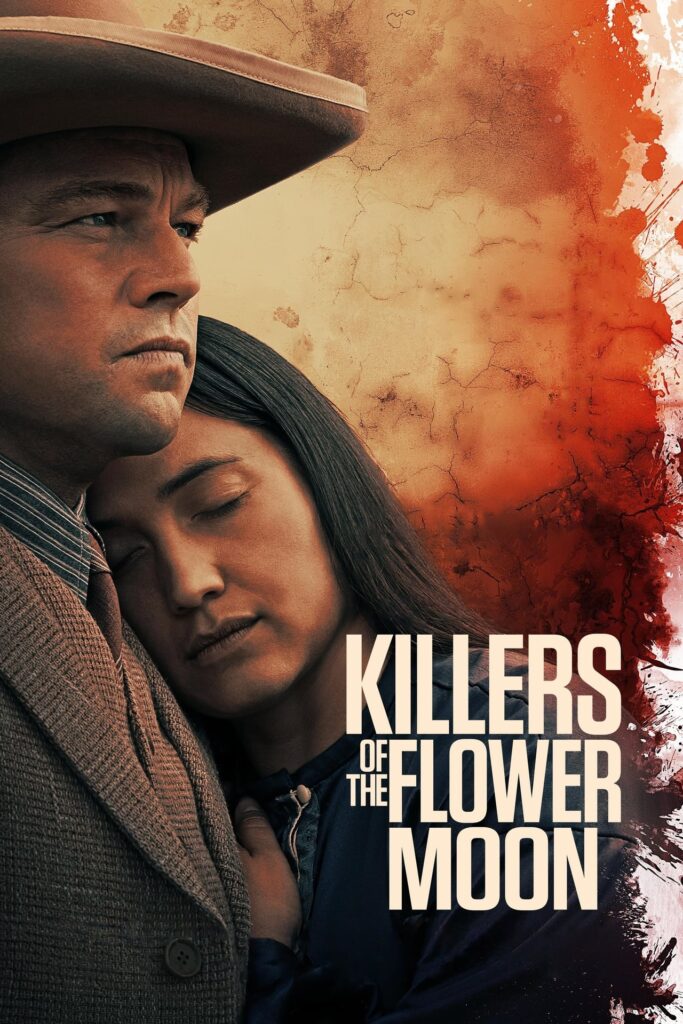When people think of the art of cinema, many will think of the name Martin Scorsese. Scorsese is one of the greatest filmmakers in Hollywood history because he is responsible for some of the most highly-regarded and critically-acclaimed films of the last nearly 60 years. Some notable films from Scorsese include “Taxi Driver” (1976), “Goodfellas” (1990) and “The Wolf of Wall Street” (2013), among many others. This year, Scorsese has crafted yet another masterful work of art titled “Killers of the Flower Moon.” Many are hailing this film as Scorsese’s “magnum opus,” and are calling this his “most important film yet.” While the film may not be significant within the context of Scorsese’s career and overall filmography, this film is stil extremely important.
“Killers of the Flower Moon” is an epic tale that tells the true story of the mysterious murders of the Osage Native American people in Osage County, Oklahoma in the 1920s. More specifically, the film is based on a nonfiction book of the same name. The book, and subsequently the plot of the film, narrates the story of an Osage woman named Mollie Burkhart (nee Kyle) and how she and her family were personally impacted by these murders. Actress Lily Gladstone portrays Mollie in a subtle yet powerfully moving performance that is sure to garner close attention in the upcoming awards season. Gladstone stars alongside legendary actors Leonardo DiCaprio and Robert De Niro. These two actors are no stranger to working with Scorsese as the stars of his films. Someone could practically name almost any Scorsese feature film, and it would be quite likely that either one of these men played a significant role in it.
DiCaprio portrays Ernest Burkhart, the white man who married Mollie, and whose intentions throughout the film are increasingly questionable and concerning. De Niro brings life to the unnervingly charismatic political boss and crime lord William King Hale, who also happened to be the uncle of Ernest Burkhart. These performances bring the much-needed tension and drama that is sure to captivate audiences and keep them intrigued throughout the lengthy 3-hour-and-26-minute runtime. The intensely dramatic performances from DiCaprio and De Niro blend beautifully with Gladstone’s calm and emotionally gratifying performance to treat the audience to one of the finest displays of acting on screen in recent years.
Another element that is a testament to Scorsese’s passion and deep respect for the art of storytelling is in how the stories of Native American people on screen were handled. It is not necessarily my place to speak on this topic, but every moment of this film made it clear that the voices of Native American people were elevated and listened to throughout this process. Of course, this should be the bare minimum when it comes to telling the stories of peoples and cultures different from what you know and have experienced.
However, as we are all aware, Hollywood has taken far too long to come to the point of even acknowledging the ways in which they have contributed to the deep-rooted oppression and racial discrimination of several groups of people. This is why we need more filmmakers like Scorsese who have been brought up in the outdated ways in which Hollywood has operated and continues to operate, but are able to listen to the voices and stories of others when attempting to tell their stories, thus breaking this harmful cycle.
That being said, this film definitely appears to be told from the perspective of the white people, which makes sense since a white man directed it. Scorsese uses the lens with which he is familiar in order to interpret the story, but also makes room for others to influence and guide the portrayal of the non-white perspective which is the underlying heart and soul of this story.
This film is certainly a masterpiece in every sense of the word. From the nuanced and heart-wrenching performances from the star-studded cast, to the visually stunning cinematography and poetically intricate screenplay, “Killers of the Flower Moon” has cemented itself as one of the most significant films of this year, and maybe even this century.
